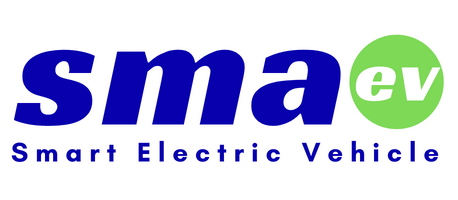The 2022 Taipei AMPA and AutoTronics Taipei held in April gathered nearly 600 physical exhibitors and 190 online exhibitors. With the world promoting green energy and with many nations signing agreements at COP26 to go electric by 2040, the electric vehicle (EV) industry is booming with a robust market growth. According to MarkLines, there is significant momentum behind the EV growth in Taiwan. In 2021, the output value of the automotive electronics industry value reached NT$300 billion. With the increasing investment from ICT manufacturers, the figure is projected to hit NT$600 billion by 2025.
The mTARC (Mobility Taiwan Automotive Research Consortium) Pavilion highlighted R&D achievements from the research centers and industry leaders. To boost EV technology development, the Technology Office of the Ministry of Economic Affairs facilitated the technical cooperation of the Taiwan’s ARTC and the Optimal-EV in the United States to develop Level 3 Driver Assistance Technology, which is estimated to drive supply chain sustainability of the ADAS and self-driving system industries. They co-founded Optimal Mobility Intelligence and plan to commercialize the technology that will enter mass production in 2023, eyeing the US electric school bus market.

The vehicle controller is the heart of an electric vehicle. It uses signals to connect parts and replace the oil vehicle engine controller. ITRI and Inventec cooperated to achieve 500 PCCU units trial production in 2021. After the vehicle validations in several buses, and being applied as in as the automotive vehicle control unit (VCU) for CS group’s new 100+ electric buses, and Foxtron’s Model T. PCCU now becomes the major candidate as a VCU for domestic electric bus companies. The hardware integrates multiple IC chips with all functions being diagnosable and protected. Additional safety control unit is added as the redundant. In addition, Simulink library is provided, allowing users to quickly develop application-layer software.
Power control unit is also a key component to drive EV forward. SiC (Silicon Carbide), used in electric vehicle power systems, can reduce size and increase the power density. SiC uses discrete film capacitors, which can greatly reduce the size of the drive controller and increase the power density. The silicon carbide technology can drive the motor at high voltage and has a higher temperature tolerance, increasing the rated power. Although SIC-based solutions are still used in high-end EVs due to its costs, Silicon Carbide technology has been increasingly used in fast-charger designs. It’s good thermal dissipation and longer battery life make it more competitive than IGBT-based solutions.
The high-quality and low-distortion joint effect of friction stir welding technology is necessary for the body to be lightweight and structurally strong. Another highlight of the pavilion is the aluminum alloy heatsink, welded by friction stir welding technology, can achieved the lightweight benefits of vehicle body components so as to obtain orders from first-tier car manufacturers in Europe and America. The technology is developed by Metal Industries Research & Development Center (MIRDC), and overcomes the angle limitation and achieves 3D surface welding with small curvature radius. In 2021, it has successfully obtained orders from major Europe and the US electric vehicle manufacturers, with an annual output value of more than NT$50 million.

Rising Demand on EV Chargers
Taiwan is a major supplying hub of EV charging stations for global EV makers and charging station companies. At the show, we see the makers are promoting solutions that are greener, more integrated and support higher power output.
Phihong Technology, fifty years of experience of power supply design and development, recently became the supplier of Shell’s EV charging station. The company displayed its new product that support up to 360KW, and the other eye-catching solar pile that supports solar energy. Besides, the company exhibited its multi-media charger with a display can be used as a digital signage for companies to promote their solutions. The other highlight is its public charging station designed for large open spaces, can be used for large vehicles like buses. It can be installed combine them into different area to meet the local needs.

Seeing that electric vehicle is a mega trend, Shihlin Electric is eagerly developing EV powertrain in response to this trend, and help its customer move toward this growing market. Its 4 kW ~ 150 kW powertrain system is suitable for vehicles such as E-Scooter, motorcycle, off-road vehicle and passenger/commercial vehicle.

The company is partnering with eTreego, a spin-off company from ITRI, to develop its charging pile business. It can provide complete DC and AC charging solutions compatible with different charging interfaces for two wheelers to four wheelers, including buses.






